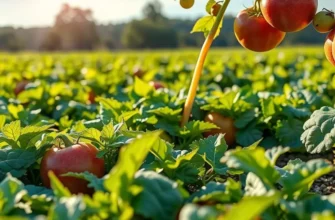Cucumbers are a refreshing addition to salads, sandwiches, and snacks, but keeping them crisp can be a challenge. Whether you grow your own or buy them from the store, learning effective storage techniques is essential. This guide offers actionable strategies to maintain your cucumbers’ crunchiness, reduce food waste, and make the most of your purchases. Implementing these tips will not only keep your cucumbers fresh but also improve your overall food management at home.
The Ideal Storage Conditions

Understanding how to store cucumbers correctly is the first step to maintaining their freshness. Cucumbers thrive in cool, moist environments, but they are sensitive to ethylene gas, which can cause them to ripen too quickly. Implementing simple yet effective storage practices can prolong the life of your cucumbers, keeping them crisp and refreshing.
Temperature Matters: To maximize their freshness, store cucumbers in the refrigerator at a temperature range between 45°F and 55°F (7°C and 13°C). This slightly warmer than standard refrigerator temperature helps cucumbers stay crisp, preventing the cellular breakdown that occurs at lower temperatures. If your refrigerator doesn’t have a controlled drawer, consider keeping them on a top shelf, where temperatures are less cold.
Humidity Control: Cucumbers require a humid environment to maintain their moisture. Wrapping them in a damp paper towel or placing them in a perforated plastic bag can help retain water. This method allows moisture to stay with the cucumbers, while the perforation ensures adequate air circulation, preventing rot and mold formation. For those concerned with minimizing waste, using a reusable, damp cloth wrap can serve the same purpose.
Avoid Ethylene-Producing Fruits: Ethylene gas is responsible for the accelerated ripening of many fruits and vegetables. Cucumbers are particularly sensitive to this gas, which can drastically reduce their shelf life. Avoid storing them near ethylene producers like bananas, tomatoes, or apples. Designate a separate crisper drawer for cucumbers and similar ethylene-sensitive produce to optimize their storage conditions. If your refrigerator space is limited, a simple basket on a counter away from these fruits can also suffice.
Incorporating these practices into your kitchen routine can significantly enhance your ability to keep cucumbers fresh for extended periods, reducing food waste. By being mindful of storage methods, not only do you ensure that cucumbers remain crunchy and delicious, but you also make a conscious step towards sustainable kitchen habits. If you are interested in more ways to enhance your storage practices with eco-friendly solutions, consider exploring options for a sustainable and eco-smart kitchen storage approach. These insights, combined with proper cucumber storage techniques, will lead to a more enjoyable and efficient culinary experience.
Extend Crispness with Smart Prep Techniques

Keeping cucumbers fresh requires attention to both storage and preparation. By adopting smart prep techniques, you can maintain their crispness and reduce waste. Here are some effective methods.
First, always wash before storage. Rinsing cucumbers under gentle running water helps remove dirt, bacteria, and residues from pesticides. Any lingering contaminants can accelerate the decay process. Make sure to dry them thoroughly with a clean towel or let them air dry completely before storing. This minimizes moisture accumulation, which can lead to quicker spoilage.
Another key technique is to cut only when needed. Once a cucumber is sliced, it begins losing moisture almost immediately. This moisture loss results in a less crisp texture and shortened shelf life. Keep cucumbers whole in the refrigerator, slicing them just before consumption to preserve their natural crunch.
For those with an abundance of cucumbers, consider the freezing method for longer storage. Start by slicing the cucumbers into even rounds. Blanch the slices briefly in boiling water for about one to two minutes. This process helps preserve color and flavor, even though it sacrifices some crunch. Immediately after blanching, transfer the slices to an ice bath to halt the cooking process. Once cooled, dry the slices thoroughly and place them in airtight freezer bags. While these frozen cucumbers may lack the texture for fresh salads, they can be a great addition to smoothies or as a base in stews and soups. Not only does this prevent waste, but it ensures that you have ingredients ready for other culinary adventures.
These prep techniques align with principles of sustainable and eco-friendly kitchen habits. Planning and preparing food in ways that minimize waste and maximize utility can significantly benefit the environment and your budget. For more insights into eco-smart kitchen practices, check out this resource on eco-smart kitchen storage.
Applying these techniques will help extend crispness while reducing waste. Above all, they ensure that you can enjoy the refreshing taste of cucumbers as long as possible.
Final words
Keeping cucumbers crisp is achievable with simple adjustments to your food management routine. By understanding their storage needs and using effective prep techniques, you can enhance their longevity and enjoy their fresh taste for longer. Remember to keep cucumbers in a cool, humid environment, avoid ethylene gas, and only cut them when ready to eat. These practices not only preserve your cucumbers but also contribute to reducing food waste and maximizing your grocery investments. Embracing these practical tips will not only deliver the crunch and flavor you desire but will also transform how you manage fresh produce in your home.







